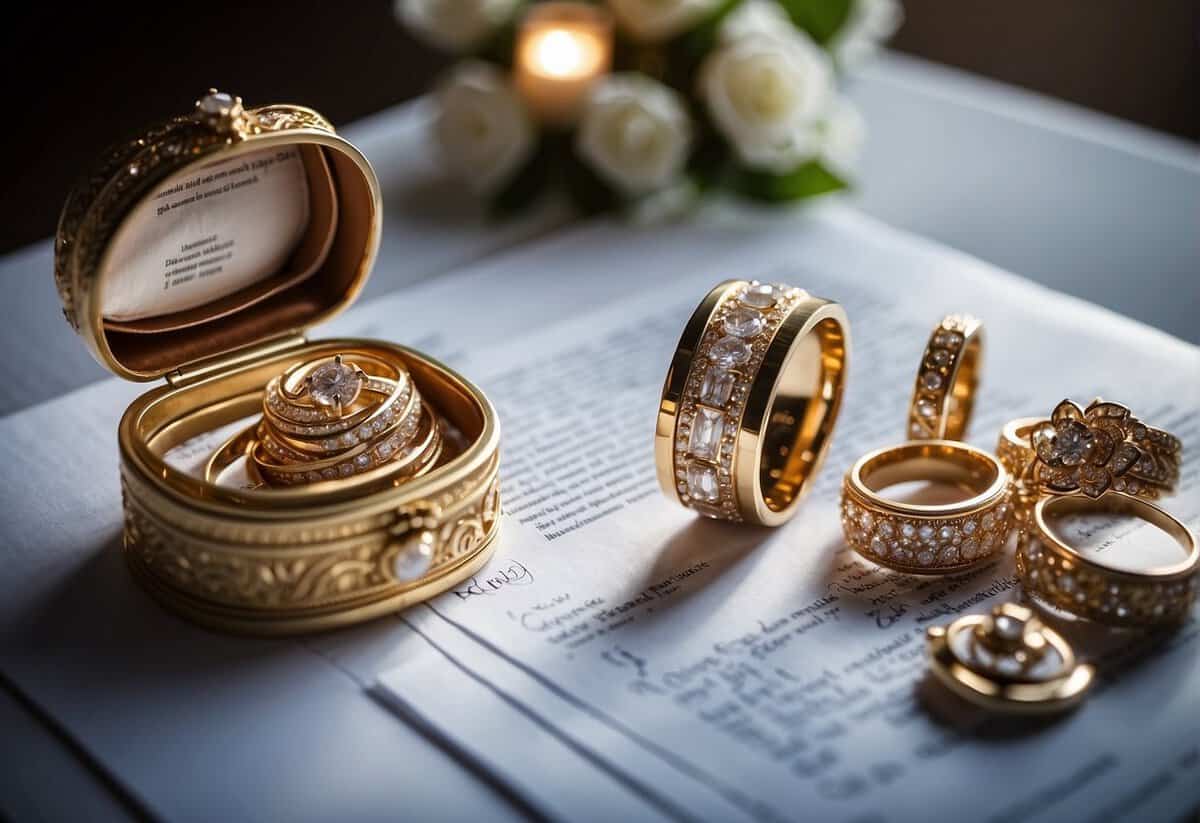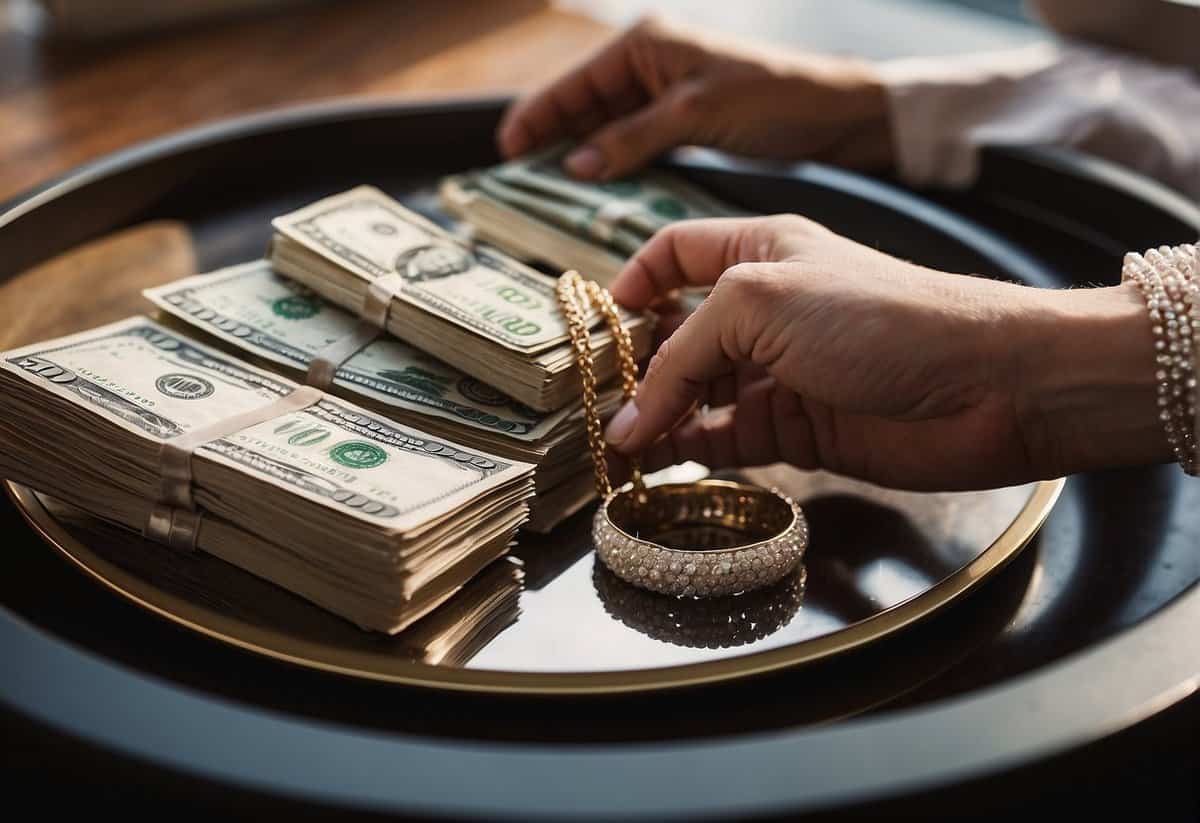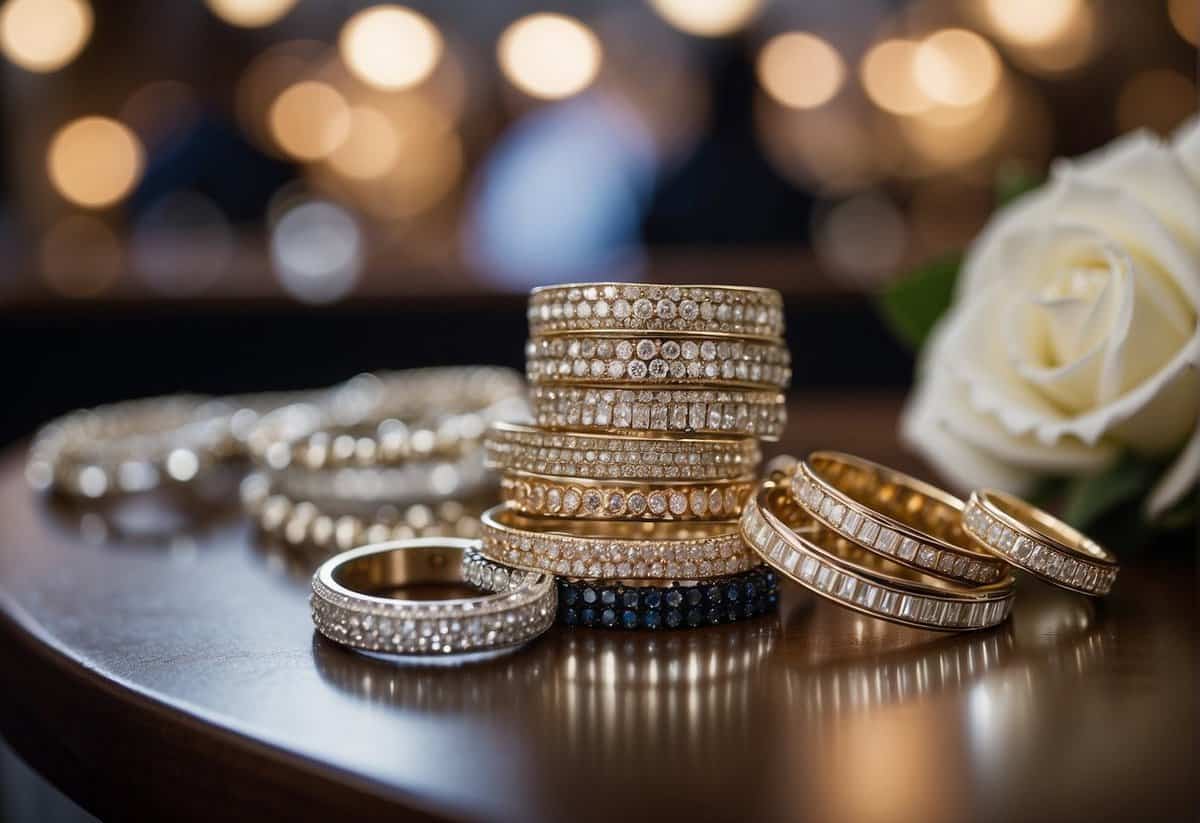Who Pays for the Bride’s Jewelry? Unveiling Wedding Expenses
When planning a wedding, the question of who pays for what can start to feel like a complex puzzle. With traditions varying widely across cultures and modern approaches adding new twists, it is no wonder that who shoulders the cost of the bride’s jewelry can become a point of contention or confusion. Traditionally, the cost of the bride’s jewelry has been seen as part of the dowry or bridal wealth, implying that the bride’s family would cover it. However, as societies and marital practices evolve, these traditional approaches are often replaced with more contemporary arrangements where expenses are shared differently or even paid for by the bride herself.

In modern weddings, which often blend tradition with personal preference, the answer to who pays for the bride’s jewelry depends on several factors, including cultural norms, the financial situations of those involved, and the couple’s own values and decisions. Some families adhere to the time-honored customs whereby the bride’s family pays for most of the wedding expenses, including the bride’s jewelry. In contrast, others opt for a more egalitarian approach where costs are split evenly or contributions are made based on the ability to pay. In some cases, the groom may choose to purchase specific pieces of jewelry, such as the engagement ring and a wedding day gift, while the bride may buy her own accessories.
Key Takeaways
- The responsibility for purchasing the bride’s jewelry varies according to tradition, culture, and financial circumstances.
- Modern practices allow for flexibility in determining who pays for the bride’s adornments.
- Couples may consider their values and preferences alongside traditional guidelines when budgeting for wedding expenses.
Historical and Cultural Context

When you’re exploring who pays for the bride’s jewelry, it’s enlightening to understand the historical and cultural nuances that have shaped this tradition. Jewelry often carries significance beyond its aesthetic value, symbolizing marital commitment, social status, and adherence to cultural norms.
Traditions Influencing Jewelry Expenses
Historically, the burden of jewelry expenses for a marriage has often fallen on the bride’s family as part of the dowry system, a practice with ancient roots. This system, prevalent in many cultures, reflects a tradition where the bride’s family provides a form of financial support, which includes jewelry, to the new household. Moreover, certain wedding etiquette has established precedent whereby it’s customary for the bride or her family to bear these costs, reinforcing familial bonds and ensuring that she has assets in her new life.
Variations Across Different Cultures
Every culture has its unique approach to matrimonial traditions. In Western cultures, jewelry is commonly seen as a status symbol, and brides or their families might invest in significant pieces for the wedding. Conversely, in Eastern traditions, jewelry can hold a symbolic connection to honoring ancestors and deities. With the evolution of modern marriage conventions, LGBTQIA+ couples have the freedom to create their own traditions regarding jewelry, often guided by personal preference rather than rigid cultural norms. This signifies a contemporary shift towards more inclusive practices, where the focus is on the mutual expression of commitment, regardless of who foots the bill.
Your understanding of these contexts will enhance your appreciation of the varying practices and the significance they hold in different societies.
Determining Financial Responsibilities

When planning for a wedding, understanding who is financially responsible for specific expenses like the bride’s jewelry is essential. It’s important to consider both tradition and current practices.
Family Contributions and Expectations
Bride’s Family: Historically, the bride’s family has been expected to cover the majority of the wedding expenses, including items such as the wedding gown and accessories. This often extends to the bride’s jewelry as well, especially in traditional settings.
Expectations:
- Engagement party (optional)
- Wedding ceremony and reception
Groom’s Family: Traditionally, the groom’s family has a shorter list of expenses, with expectations like the marriage license and officiant fee. However, they are not typically responsible for the bride’s jewelry.
Contributions may include:
- Rehearsal dinner
- Honeymoon (varies)
Bride and Groom’s Financial Roles
As wedding practices evolve, you will find that many couples choose to take on significant portions of the financial responsibility themselves. For the bride’s jewelry:
- Bride: May choose to purchase her own jewelry as a personal selection or as part of managing her own wedding expenses.
- Groom: Occasionally, the groom or the groom’s family might contribute to this cost, particularly if it’s a family heirloom or a special gift.
Key points to remember:
- Contributions are often discussed and decided upon by all parties involved.
- Flexibility and communication are crucial in determining financial roles.
Jewelry Expenses Breakdown

Wedding jewelry, an essential part of your special day, can include various pieces, but the engagement ring and wedding bands are the most significant expenses. Let’s look at who traditionally pays for these precious items and what to consider when budgeting for the additional accessories you’ll wear down the aisle.
Engagement Ring and Wedding Bands
Engagement Ring: The cost of the engagement ring is traditionally the responsibility of the groom or the groom’s family. This ring is a significant purchase and is typically chosen and paid for before the proposal. The average cost can vary widely depending on factors like the cut, carat, and jeweler you select, but plan for this to be a notable part of your wedding budget.
Wedding Bands: For the bride’s and groom’s wedding bands, the costs are often split. The bride (or her family) usually purchases the groom’s ring, while the groom (or his family) purchases the bride’s. These bands range from simple gold rings to more elaborate designs with diamonds or other gemstones. Shopping for these together can also provide financial help as many jewelers offer discounts on ring bundles.
Additional Accessories for the Big Day
On top of rings, you might consider other accessories such as earrings, bracelets, or necklaces to complete your wedding ensemble. While there’s no set rule, these additional accessories are typically chosen by the bride and may be covered by the bride’s family or come from the couple’s budget—depending on their financial situation and preferences. Remember to communicate with family members if they have expressed interest in contributing to these costs, and always keep an open line with your jeweler to find pieces that fit your style and budget.
Practical Budgeting Advice

When planning your wedding, it’s essential to budget carefully for each aspect, including jewelry. By allocating funds specifically for this purpose and managing overall wedding costs, you can avoid financial strain and enjoy your big day with confidence.
Allocating Funds for Jewelry
To effectively manage your wedding budget, start by defining a clear budget for your bridal jewelry. This should be a part of your overall expenses, separate from other costs. Consider using a table to break down your budget and visualize where your money is going:
| Expense Category | Percentage of Total Budget | Allocated Funds |
|---|---|---|
| Venue | 50% | $15,000 |
| Catering | 20% | $6,000 |
| Attire | 10% | $3,000 |
| Jewelry | 5% | $1,500 |
| Photography | 10% | $3,000 |
| Miscellaneous | 5% | $1,500 |
Keep in mind that bridal jewelry can also come as gifts from family or friends, potentially reducing the amount you need to allocate from your budget.
Tips for Managing Wedding Costs
Now that you have set aside funds for jewelry, consider these tips to manage your overall wedding costs:
- Prioritize: Decide on your must-haves versus nice-to-haves.
- Compare Prices: Shop around for the best deals on jewelry. Look for sales or consider purchasing pre-owned pieces which can offer significant cost savings.
- Think Creatively: There’s no rule saying you must have expensive jewelry. Handmade or less costly materials can be just as meaningful and beautiful.
- Financial Planning: Speak to a financial advisor for personalized advice on budgeting for your wedding, ensuring you can cover all your expenses without compromising your financial goals.
Remember, the most important part of your wedding day is your commitment to each other, not the amount you spend on jewelry or other items.
Frequently Asked Questions

Navigating the nuances of wedding expenses can be intricate, particularly when understanding who is traditionally responsible for what costs. The following FAQs are designed to clarify who generally pays for the bride’s wedding jewelry and other related expenses.
Who typically covers the cost of a bride’s wedding jewelry?
Traditionally, the cost of a bride’s wedding jewelry, including the engagement ring and wedding band, is often the responsibility of the groom. However, modern approaches see couples viewing these expenses as a joint investment.
What are the traditional responsibilities of the groom’s parents in wedding expenses?
Historically, the groom’s parents might cover specific costs, such as the rehearsal dinner or honeymoon. In terms of jewelry, they are not typically expected to contribute, although this can vary with cultural customs.
How do cultural differences affect who pays for wedding-related costs?
Cultural differences can greatly influence financial responsibilities for a wedding, with some cultures expecting the bride’s family to take on most expenses, while others may split costs more evenly or follow different customs altogether.
What expenditures are usually expected to be covered by the bride’s parents?
The bride’s parents traditionally may cover a large portion of the wedding expenses, including the ceremony and reception costs. However, contributions to their daughter’s jewelry are less common and vary by family and cultural tradition.
Is there an age at which it is customary for the bride to assume the cost of her own jewelry?
There is no set age, but typically, older, financially independent brides might choose to purchase their own wedding jewelry. This also depends on personal preference and financial circumstances.
What should be considered when deciding who will pay for items like the wedding dress and reception?
When deciding on financial responsibility for the wedding dress and reception, consider the couple’s financial independence, any existing traditions, and open communication with family members to understand everyone’s willingness and ability to contribute.

